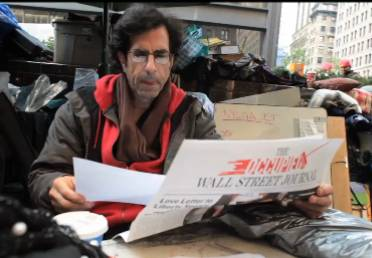 After two months, Occupy Wall Street’s reputation is at a turning point — their “protest PR” skills hold the key to the grassroots movement’s future. Frankly, I got their message about economic inequality and the 99 percent in the first week. Yet, many of us feel positive about the whole Occupy experience because, after several often-trying months, New York City has demonstrated a strong commitment to protecting free speech and the right to protest.
After two months, Occupy Wall Street’s reputation is at a turning point — their “protest PR” skills hold the key to the grassroots movement’s future. Frankly, I got their message about economic inequality and the 99 percent in the first week. Yet, many of us feel positive about the whole Occupy experience because, after several often-trying months, New York City has demonstrated a strong commitment to protecting free speech and the right to protest.
But, many of us also have little patience when laws are broken, disorder is encouraged and we see New York’s Finest being put in the impossible position of keeping the peace when chaos is the goal. Yesterday’s “Day of Action,” which included efforts to close down the New York Stock Exchange and running battles on the streets of Manhattan, surely tested OWS’s public support.
It had to be a day when the OWS PR operatives were working overtime. Take a look at the video of Bill Dobbs, a public relations professional who evidently has found both a cause and a client in one. Last night, watching my 10 o’clock news (I rise at 5 a.m., so no news at 11 for me!), I couldn’t help but notice the “beating” that the Occupy movement was receiving from some critics. Of course, OWS has gotten more than their share of good PR and sympathetic comments, thanks to Dobbs and others.
The decision by Mayor Bloomberg to clear Zuccotti Park a few days ago obviously puts OWS at a critical juncture, if for no other reason than protesters don’t have a home and essentially have joined the city’s commuting masses. Now it’s back to the streets and proving through acts of active protest that the movement is not only still alive, but relevant and strong.
It’s been fascinating to see how communications – both digital and traditional – have played such a huge role. Well-known Long Island political pundit Jerry Kremer, a skilled political and PR operative himself, recently wrote that what he sees as lacking most from the group is a coherent message that could be a call to arms for people of all ages. There is no common thread that unites the participants and from a distance it appears that the gatherings are made up mostly of malcontents, Kremer blogged.
”Like it or not the recent Arab Spring demonstrations had meaning and purpose. America’s weeks of anger haven’t hit the raw nerves that such events should pierce. Playing on an old theme, a protest demonstration is a terrible thing to waste,” said Kremer.
The very core of OWS is a sort of hyper-democracy in which the movement belongs to all the protesters and not just to a few leaders. But, that distributed management by “the people” is a mistake on several levels. First, a go-to leader creates more press opportunities, a more cohesive message and offers a symbol that, if properly packaged, can attract people and support to the cause in ways that move beyond the rhetoric. A leader can also become a legitimate player who can use his or her visibility and constituency to promote the group’s agenda.
This loosely organized grassroots movement depends mightily on good PR – in no small part because many elected officials still have their finger in the wind waiting to see which way public sentiment will turn. That’s why yesterday’s protests to shut down Wall Street have the potential to send OWS packing or allow it to protest another day.

